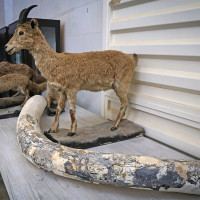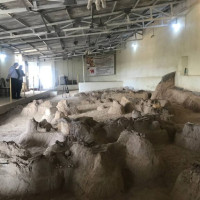
Maragha the Fossil Site
The fossil site of Maragha is a region dating back to 7 million years ago.
The site is located in a field outskirt of Maragha, East Azerbaijan and known as the first natural fossil antiquity of Iran. The fossils are the remnants of Mammoths, Giraffes, Rhinos, Tigers, Zebras, Elephants, Hyena and etc. The fossil layers belong to 4 to 7 million years ago.
The expansion of the region is about 40.000 hectare, approximately 1/40 of the site is now under the protection of Department of Environment as a national natural antiquity; It makes to stop any manipulation in the region.
According to the ex-head of the Department of Environment, more than 3.000 fossil pieces discovered which belong to mammals and other vertebrates.
The site was discovered about 200 years ago by a Russian fossilologist. It’s interesting to say that the first discoveries from the site belonged to a prehistoric elephant was taken to Europe to sell.
Before the Islamic Revolution, about 1500 pieces of the fossils were taken to Harvard University by American researchers and were not bring back after the political change in Iran. Finally, by the order of ICJ in 2015, the fossil pieces brought back to home.
The tales and the folk beliefs attribute the bones to the gigantic men, horned men, unicorns and monsters. But the researchers found the fossils of vertebrates now lives in Africa generally belongs to the prehistoric era.
To access to this precious and unique fossil site one should depart to the east of Maragha and find the site near Shalilvand and Gartavol.
Visiting Maragha makes you wondered, even when you imagine the history of the city. Maragha is invaded many times by steppe invaders, Mongols and Timur successors but is still alive and breathes. Maragha observatory, historical towers and Zahak Citadel are the most famous monuments of Maragha. There is a Mithraeum in Maragha that is excavated in the rock with the rows of light shining from the roof of the stone tunnels to the interior space with the dusty corridors and the remains of plant form stuccos.

